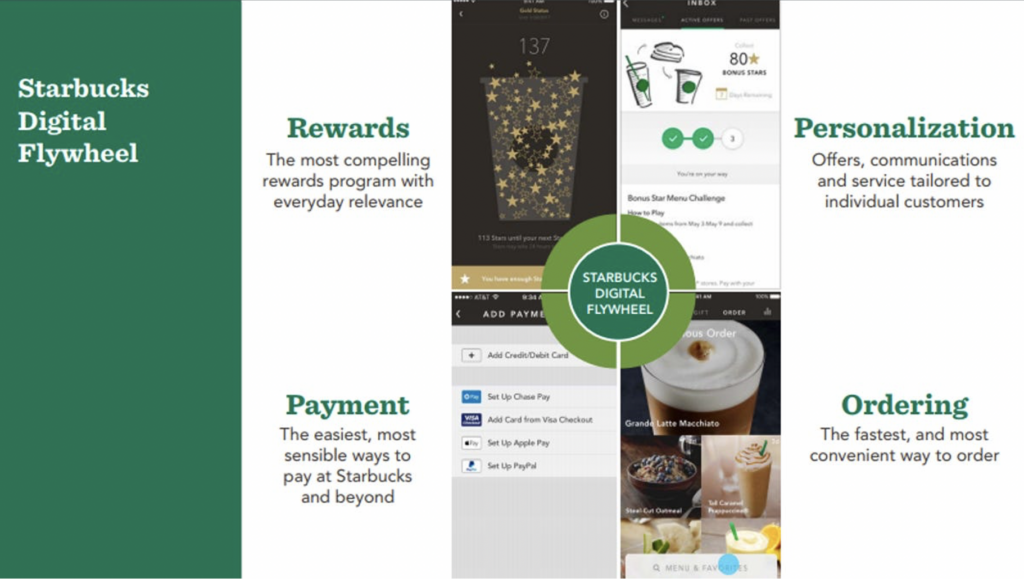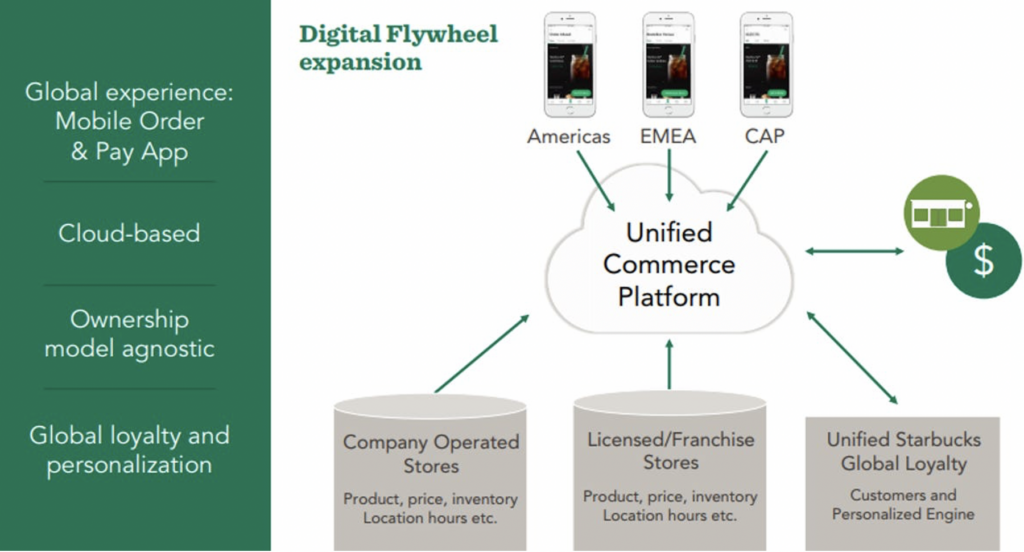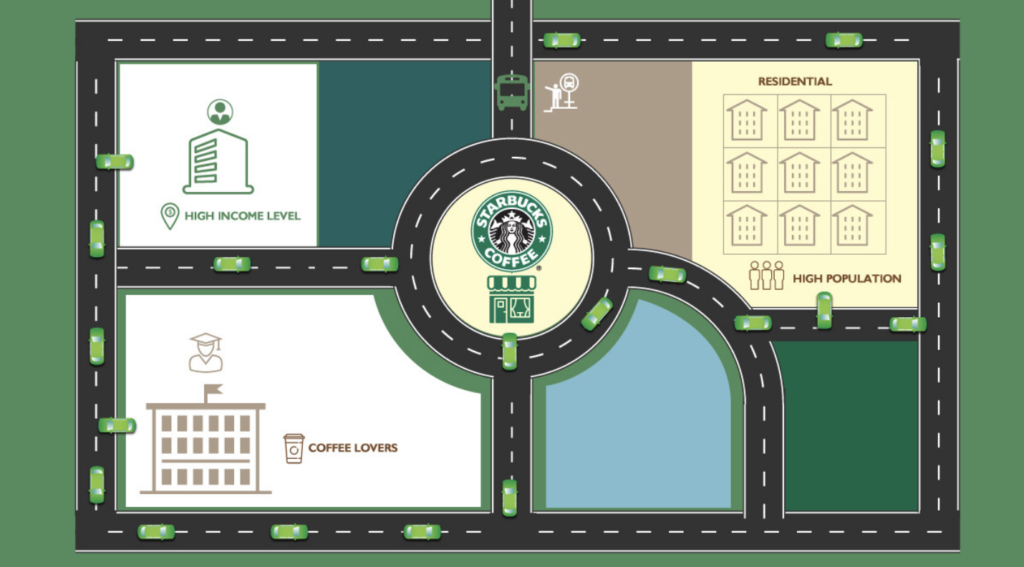Starbucks: Leveraging Big Data and Artificial Intelligence to Improve Experience and Performance

Starbucks uses powerful data science and analytics beans to brew each cup of coffee to improve their customer experience and service performance.
Background & Introduction
With its corporate headquarters in Seattle, Washington, Starbucks Corporation is a transnational American chain of coffee shops and roasteries. It is the largest chain of coffee shops in the world. There are around 90 million transactions a week in 25,000 worldwide Starbucks stores. They take the advantage of those massive amounts of data to help the corporation improve their customer experience and make their direct marketing, sales, and other business decisions.
Data Collecting & Customer Experiences
Starbucks launched its reward program and mobile app to collect the customers data and get to more about their purchasing habits, which reminds me of the Domino’s Pizza Profiles. Their mobile app has more than 17 million and the reward program has 13 million active users. From the notes of Matthew Ryan, the global chief strategy officer of Starbucks, “how we are able to drive so much value from a relatively small portion of customers, 13.3 million active reward customers compared to a total of approximately 75 unique customer visits to our stores each month.” Starbucks uses the massive amount of data collected from their app to personalize the customer’s Starbucks experience by gathering information about their coffee buying habits, from their favorite drinks to what time they typically order. This will allow personalization of the experience to happen at the new locations they visit, and the app will provide suggestions of what customers might be interested in trying. They applied the Digital Flywheel program, which merges digital and physical customer interactions around rewards, personalization, payments and orders. Each interaction with the end user generates qualitative and quantitative information and data to provide insights on where and how to create new value and turn in the next round of innovation. For example, it can help Starbucks recommend food and beverages to customers who don’t know but are willing to try them, with recommendations updated with different factors, such as weather, holidays, location, etc. In addition, using the data collected, they have conducted this unified commerce platform with personalized tools to build digital customer relationships and integrate inventory and point-of-sale systems.
Data Usage in Promotions & Marketing:
With more than 16 million members in the U.S. alone, Starbucks’ loyalty programs account for roughly half of all store transactions nationwide. They also help Starbucks target and personalize their marketing with personalized offers and discounts that they send out for marketing emails. They not only suggest new things that customers like based on their previous order history and data, but they also help Starbucks target and personalize their marketing. In addition to targeting already existing customers, personalized emails with attractive offers are sent to customers who have not been to Starbucks recently in an effort to re-engage them.
Data analytic & Product and Sales decisions:
Furthermore, personalizing customer orders and enhancing their order experience, the data also helps the company improve and expand their services and product markets. They utilize the power of data intelligence through Atlas, a mapping tool and business intelligence platform developed by Esri. The data assists in identifying a potential new store location. Before recommending a new location, the tool analyzes a wealth of data, including accessibility to other Starbucks locations, demographics, traffic patterns and more. It also supports product expansion with grocery stores and menu updates for specific areas. They take the data into account to decide what products to offer. It turns to data to determine what products they should offer. It combines the data received from stores about how customers order drinks and combines that information with reports from other industries about at-home consumption to create their grocery store product line. This data also drives special limited menu items based on the circumstances at the time. In one example, when Memphis, Tennessee, was experiencing a heat wave, Starbucks launched a local Frappuccino promotion to entice people to beat the heat. While Starbucks has 87,000 beverage combinations, they continue to monitor data on which drinks are best sellers so they can continue to make changes to their menu based on local tastes.
Challenges & Opportunity
To implement these digital and data analytics transformations, there are three challenges. First, the challenge was the connection between the customer experience in the physical store and on the digital platform. They had to use the store as a destination and extend the experience into the digital customer relationship, and needed to consider how best to leverage data to balance that relationship. Second, they also faced the challenge of hiring new positions to fill development and data science roles, and their HR and management team needed to change and adapt. Third, they also need to extend the data experience to different geographies of the world and use the data to personalize the experience for each local store and update it at the same rate.
In conclusion, in this digital age, Starbucks has truly taken advantage of big data, data analytics and artificial intelligence to improve their customer experience and service performance. Their data-driven business strategy has helped them build these compiling competitive advantages. However, due to the pandemic, customer behavior has fundamentally shifted as demographics have changed. They must stay ahead of their competitors to gain a footprint of these changes and leverage the right technology to better predict and plan their future strategies. There is also a need to consider what plans they have to advance other competitive advantages in this area if their competitors also begin to adapt and invest in big data and data analytics.
Resources:
https://www.zdnet.com/article/starbucks-to-step-up-rollout-of-digital-flywheel-strategy/
https://www.analyticssteps.com/blogs/6-ways-which-starbucks-uses-big-data
https://www.bcg.com/publications/2021/driving-business-impact-with-the-innovation-flywheel-approach
https://www.intelligentautomation.network/transformation/articles/starbucks-digital-transformation
https://www.zdnet.com/article/starbucks-to-step-up-rollout-of-digital-flywheel-strategy/







Thank you for the blog post, Feifei.
I’ve seen first-hand all of the analysis you’re pointing to – from the Digital Flywheel program through to the tailored product expansion strategies by geography. Looking beyond how Starbucks collects customer data, it’s also been interesting to see how they leverage AI in Deep Brew to track inventory and recalculate replenishment orders, saving store employees hours of inventory management time. This technology is deployed at a granular machine level – collecting data on the beans used, beverage temperature, water quality etc.
As a Starbucks regular, I’ve benefited the convenience of the app that comes from ordering ahead and picking up, and have enjoyed seeing how technology has freed up staff operational time so that they can be deployed to the front of the store – interacting with customers.
Thanks Feifei. Its interesting how Starbucks has been able to leverage data from a small subset of it’s customer base. I wonder if they find any significant consumption pattern differences between loyalty customers and others that could create issues when using loyalty data to extrapolate to the whole business?
I also think it’s interesting how much data is being used behind the scenes given that as a more occasional consumer, I don’t consider Starbucks to be a high tech company.
Thanks Feifei. In your post you mentioned Starbucks’ mobile app which today has more than 17 million users. I read articles that the implementation of this App in 2011 marked the company’s point of entry into data and analytics. I was curious if that might had a visible influence on Starbucks’ financial numbers. So, I did a little back ground search and stumbled over 2 figures (which I unfortunately cannot insert here but I added the links below). The first shows that net revenue plateaued after 2008. The same can be stated for the number of Starbucks stores running worldwide. After 2011 (and the implementation of the app and data analytics) net revenue increased heavily and the Starbucks network experienced significant growth. I wonder how much is effectively due to the newly introduced data analytics system and to what extent this is due to normal growth following the global economic crisis.
https://www.statista.com/statistics/266466/net-revenue-of-the-starbucks-corporation-worldwide/
https://www.statista.com/statistics/266465/number-of-starbucks-stores-worldwide/
Hi Feifei, thank you for sharing this interesting post!
I believe Starbucks has built an important library full of data and transactions nowadays they can leverage to make better decisions regarding pricing, rewards, distribution, procurement, etc. This data allows them not only to provide better products for the clients but also to optimize their operation. Data has helped them promote growth in sales and an increase in profitability. As data analysis becomes more relevant in years to come, I wonder how Starbucks will transform as a company, will the data scientists become more than half of the total headcount? time will tell…